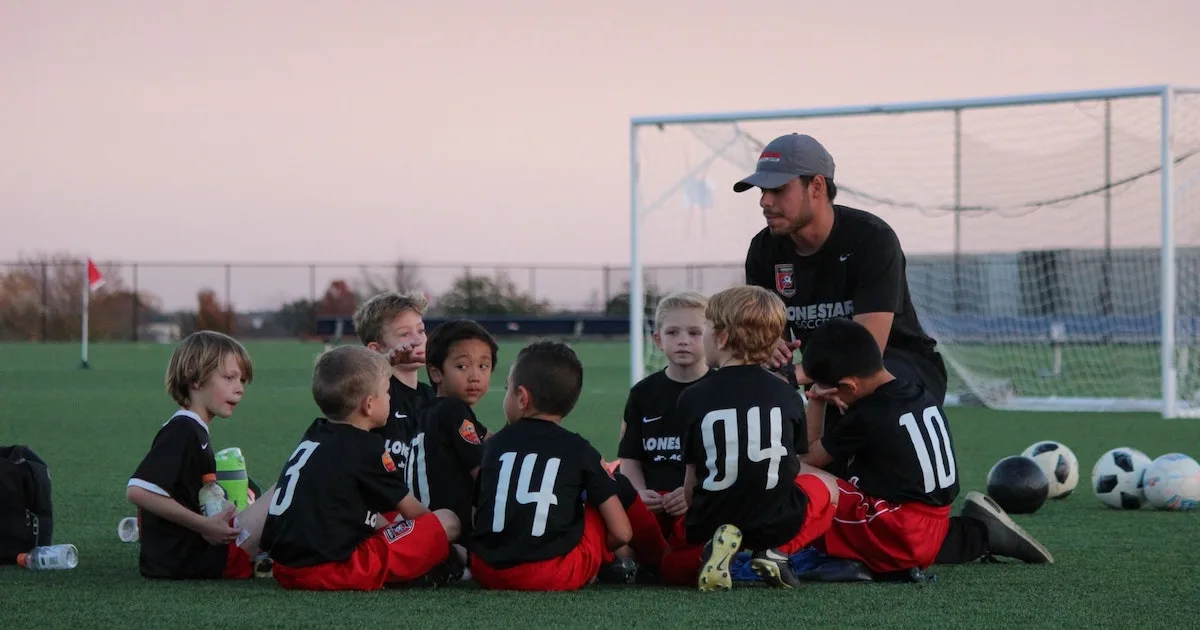
Table of Contents
Sport is a big part of life for people worldwide—it helps us connect with others, promotes physical health, and provides opportunities for personal growth. Recent reports show that only 50.7 percent of kids ages 6 to 17 played sports or took a sports lesson of some sort in 2021.
Youth sports have been proven to increase positive physical and mental health and prepare young people with the social and life skills needed to develop into well-rounded individuals. On top of that, youth sports also provide an avenue for opportunities for young people to pursue professional athleticism (as such, keeping “sport as entertainment” sustainable).
However, youth sports are not all sunshine and rainbows. Some negative aspects are worth considering if you’re: a) a parent of a child interested in sports, b) a coach looking to improve the experience of youth athletes, or c) a young person interested in playing sports.
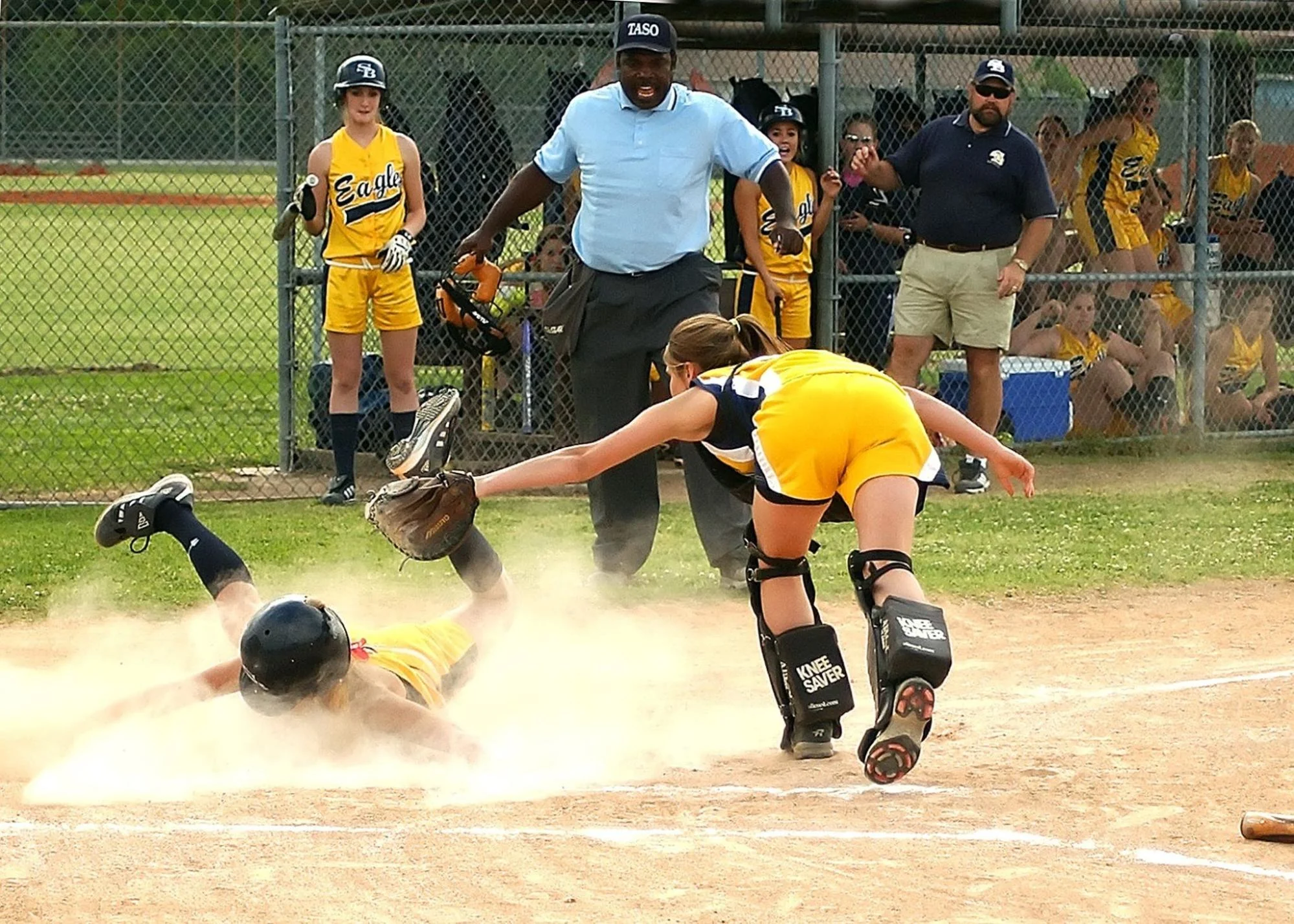
Source: Pexels
Overall, you’ll find the benefits of youth sports outweigh the negative aspects, on objective balance at least—but there is room for improvement.
This guide will go into detail about the pros and cons of youth sports and offer some suggestions for improvements to tip the balance even further so you can start or grow a successful youth sports league.
Pros of youth sports
So, let’s start with the benefits of youth sports. Organized sports participation for children, adolescents, and young athletes has been shown to have positive effects in three main areas:
- Physical health
- Psychological/mental health
- Social/emotional wellbeing
You might already feel this statement is true—but it’s worth looking at the evidence. So, we’ll break the “pros” of youth sports into those three categories, starting with physical health.
Positive physical health effects
Physical activity, in general, is suitable for human health so long as it’s not too much in a short period. It becomes even more important for youth, particularly since the US (and many other countries) has faced a youth obesity epidemic over the last three decades.
With around 17% of US children presenting with obesity in 2019, according to Global Pediatric Health, playing sports is a valuable intervention for decreasing youth obesity. But how do we know this?
A systematic review and meta-analysis of studies in sports medicine journals looking at the physical benefits of youth sports participation of overweight/obese youth shows the following results:
“This systematic review and meta-analysis found that group sports interventions were effective in improving body composition, cardiorespiratory endurance, and muscle strength health-related physical fitness components of overweight/obese youth.”
It’s important to note in this study, they also found that neither flexibility nor neuro-motor skills didn’t change in group sports interventions. Though the reason for this might be the group that the researchers studied was initially unfit to begin with.
So what about studying children who are generally fit and well already? A study on organized sports and self-organized activity in Norwegian schoolchildren saw interesting results.
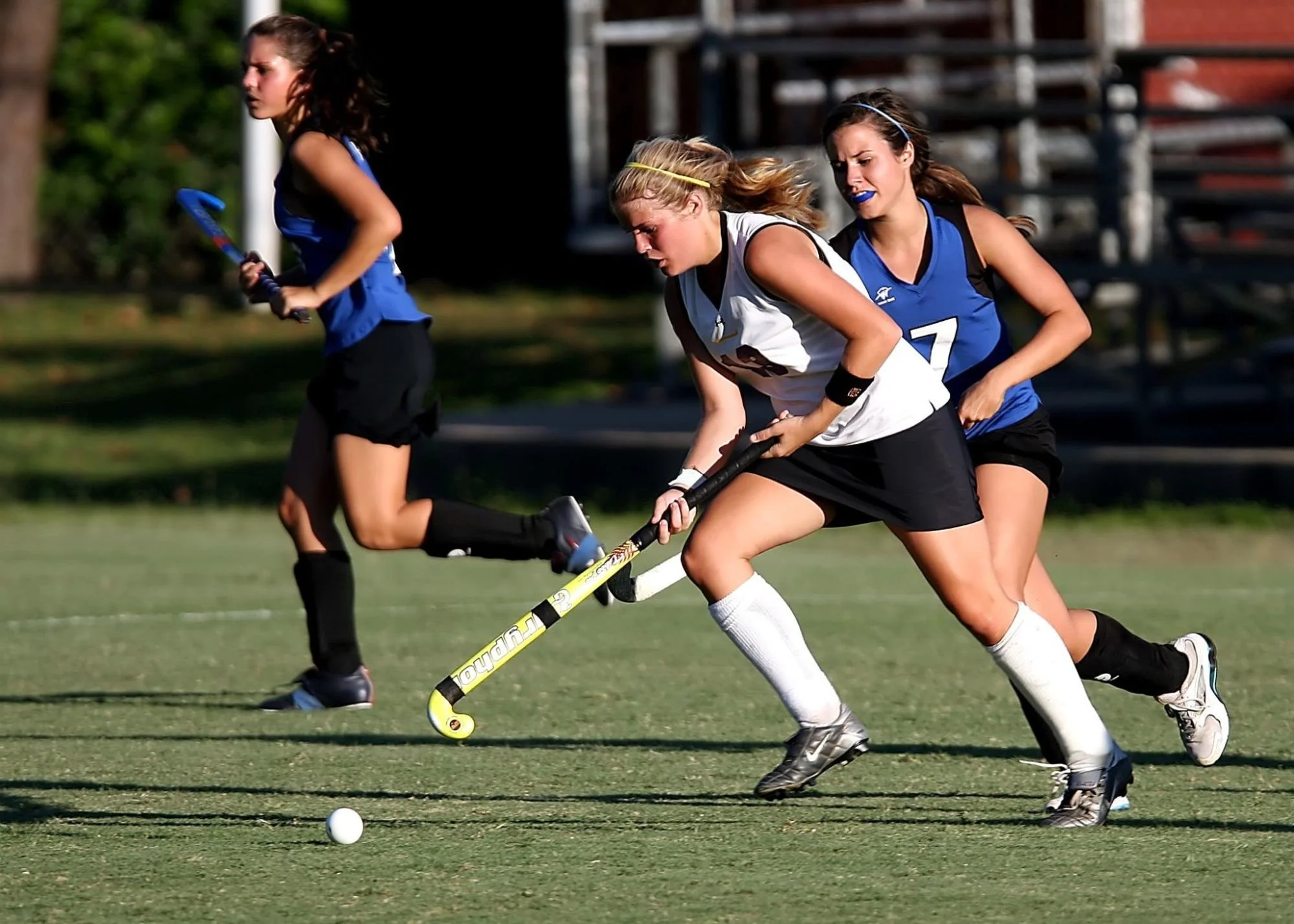
Source: Pexels
Engagement in organized sports was more related to positive health and skill development compared to self-organized physical activity—but doing both for at least one hour a week was even more beneficial.
Of course, youth sports can, more often than not, develop young people’s muscular fitness. So, to add to these benefits, another systematic study looking at the advantages of muscular fitness for children and adolescents from Auckland in 2014 concludes there is strong evidence of a positive association between muscular fitness, good bone health, and self-esteem.
These are just some of the hundreds of academic studies showing health benefits from youth sports. It’s fair to say playing sports from an early age is physically healthy.
Psychological/mental health benefits
Despite the costs of youth sports, being around other people is generally good for a kid's mental well-being because we’re all social creatures. So it follows that participating in youth sports, a fairly social activity, would provide psychological benefits.

Source: Pexels
For the most part, evidence suggests that this point is true, though we’ll look at some of the contradicting evidence in the cons section later.
An excellent study to refer to for a summary of the psychological benefits of youth sports is Eime et al. (2013). This systematic review analyzes multiple studies and concludes that youth sports have a positive impact on several areas of mental health, including:
- Psychological resilience
- Self-esteem and self-confidence
- Connectedness
- Reduced social anxiety, depressive symptoms, and less suicidality
In their conclusion, the researchers highlight how improved psychological and social health has been recorded to be more prominent in organized sport as opposed to leisure time physical activity.
Social/emotional benefits
It seems like a no-brainer that participating in sports from a young age would help develop life and social skills—since team sports require teamwork. But again, let’s look at the evidence.
The same systematic review from Eime et al. (2013) also looked at the social benefits of sports programs and listed that studies in their review found positive effects on:
- Cooperation
- Relationships with coaches and friends
- Showing respect for teachers and neighbors
- Social functioning
- Social interaction/integration
- Social self-concept
- Sportsmanship
- Teamwork
Of the studies analyzed, some distinguished between “school sports” and “club sports,” but most focused on “team sports.”
However, it’s worth mentioning that while boys and girls receive psychological and emotional benefits from participating in youth sports, boys seem to have more benefits than girls, according to a 2019 study from Costa and Fernandes.
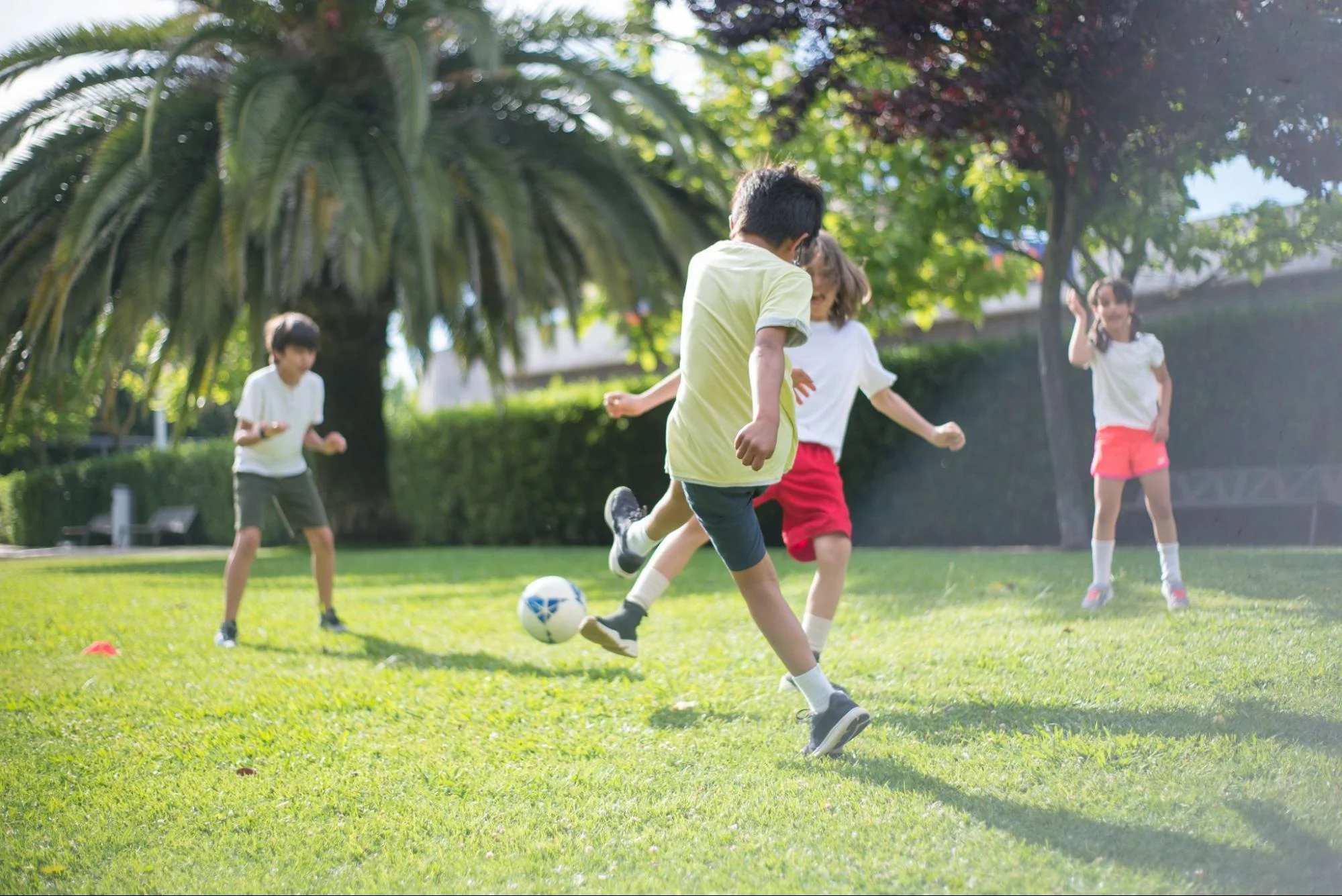
Source: Pexels
Another aspect to highlight from the above benefits is that the vast majority of studies ‘proving’ these positive effects don’t often distinguish between different sports. In most cases, it’s “play sports” or “doesn’t play sports.” As such, the general consensus is that participating in “sports” without a specific sport is better for young people's overall health and wellness.
Cons of youth sports
Let’s move on to the disadvantages of youth sports—as there are a few.
Sports specialization and risk of injury
Let’s talk about a single sport specialization to make a smooth transition. Early sports specialization is often thought necessary for gaining an advantage for college scholarships.
Many of the benefits we discussed above come from overall sports participation, but removing a child or young person from all but one sport has been shown to have some adverse effects.
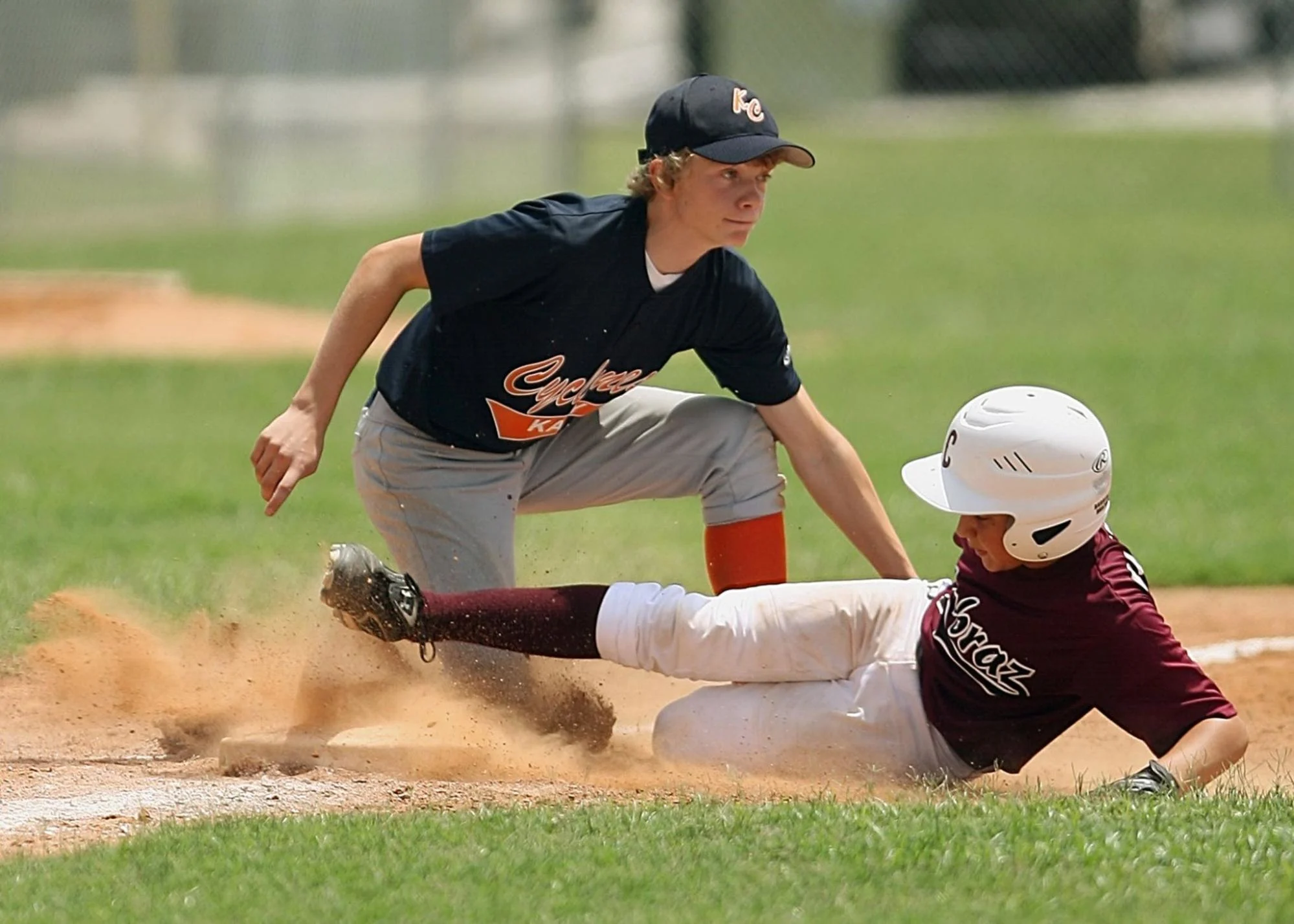
Source: Pexels
Several sports medicine organizations in the US have a consensus that specialization before adolescence may increase the risks of burnout and overuse injuries. Findings of sports injuries in specialized sport participation are pretty consistent among high school athletes—reported injuries included strains, Osgood-Schlatter disease, patellofemoral pain, and Sinding-Larsen-Johansson syndrome.
However, there have been no concrete recommendations as to what age these risks decrease, though the IOC suggested in 2015 that with a solid support system and careful precautions, youth athletes can have positive experiences from early specialization. On top of this, elite athletes often report they reached elite status through early specialization.
Negative psychological effects
Similarly to higher risks of injury, sports specialization can also have adverse psychological effects, though this position is less documented. We’ve probably met at least one young athlete who seemed “obsessed” with sporting achievement and was a little “high-strung” over any sports loss.
The Journal of Athletic Training suggests that intense training can lead to social isolation and that intrinsic characteristics such as perfectionism and unrealistic expectations from parents and coaches (to win all the time, for example) can result in excessive psychological stress.
These stressors can lead to bad coping strategies, loss of motivation, mood swings, and burnout.
Do youth sports promote positive social behavior?
Regarding negative social consequences, you’re probably wondering, “How can youth sports have any negative impact when the benefits are so great?”
For many youth sports programs, positive development is not defined by the need to build community-based social institutions, re-establish communities where young people live, or empower them to be effective agents of social change in their communities. Instead, they focus on individual achievement and upward social mobility (e.g., as a way of gaining access to higher education through scholarships).
Another area to look at is the prevalence of bullying in youth sports environments (whether perpetrating or becoming victims of bullying).
Plenty of academic studies have examined the prevalence of bullying in youth sports. For example, studies have found how “having status as an athlete may put youth in the position of power to perpetrate bullying during school time” and that perpetrating bullying behavior is often a result of weak relationships with coaches.
Of course, without programs focused on preventing, detecting, and intervening in bullying, bullying also occurs within teams from other peers. Such was the focus of a study in Frontiers of Psychology in 2022, where participants reflected on their experiences as victims of bullying from other team members.
Also, in 2020, Canada’s public opinion was that “Safety/Bullying/Violence/Abuse” was the top biggest issue for community-level sport (which included school-based sports leagues):
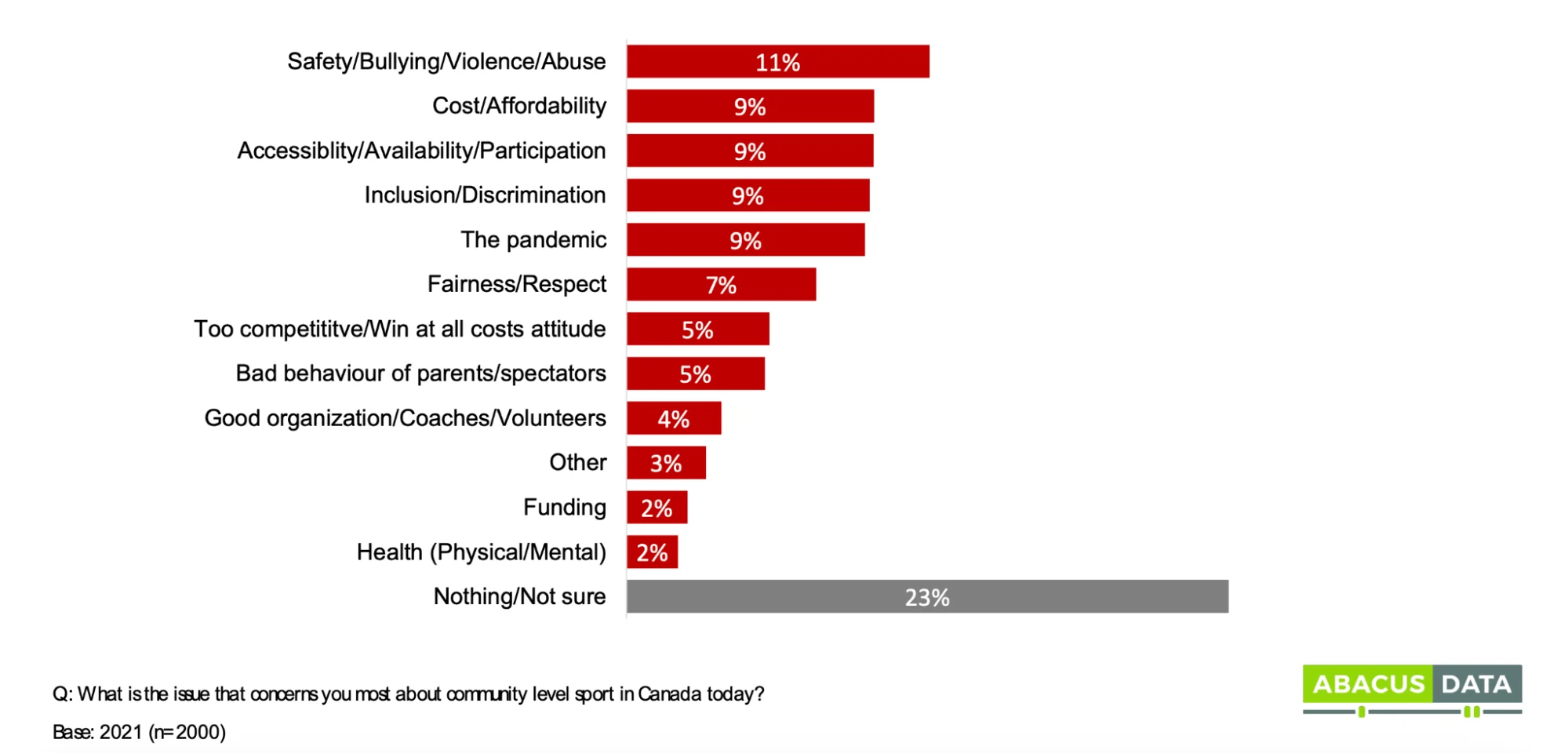
From another angle, it’s also important to highlight the often exclusionary nature of youth sports—where young people with diverse identities experience exclusion and discrimination, and the exclusion disabled children (both physically and intellectually) often face in youth sports.
Summary: Do the pros outweigh the cons?
It’s well documented that youth sports are generally beneficial for children and adolescents, with proven improvements to physical and mental health and social skills development.
But let’s quickly restate the pros and cons of youth sports in bullet point fashion:
Pros:
- Improves body composition, cardiorespiratory endurance, bone and muscle strength
- Promotes psychological resilience, good self-esteem, and confidence
- Reduces chances of experiencing social anxiety, depressive symptoms, and suicidality
- Promotes the following social aspects:
- Cooperation
- Relationships with coaches, friends
- Showing respect for teachers and neighbors
- Social functioning
- Social interaction/integration
- Social self-concept
- Sportsmanship
- Teamwork
Cons:
- Higher risk of injury
- Increases likelihood of social isolation
- Increased likelihood of stress related to perfectionism and unrealistic external expectations
- Youth sports environments often perpetuate bullying towards both team and non-team members.
- Discrimination against those with diverse identities and those who are physically or intellectually disabled.
So, from our lists, we can objectively see that the benefits of youth sports will generally outweigh the cons.
There are several ways parents, coaches, and society at large can make changes to help maximize the benefits while running a youth sports organization:
- Coaches: emphasize fun; de-emphasize winning; positive praise for both team and individuals; greater emphasis on physical activity than skill mastery; gain better education on youth athlete coaching and injury recognition/first aid.
- Parents: positive parenting through appropriate praise emphasizing fun rather than winning; focus on skill acquisition goals; positive reinforcement; promote desired behaviors such as sportsmanship, punctuality, and preparedness.
- Society: offer better training for coaches; enforce sports safety; increase funding for safety education; improve policies and procedures; increase participation for underserved groups; better availability of facilities and proper safety equipment; rules and regulations guided by science; and pre-participation physicals.
With these recommendations, the risks and disadvantages of youth sports can significantly decrease while supporting the benefits of youth sports participation.
1. Daniels SR, Jacobson MS, McCrindle BW, Eckel RH, Sanner BM. American Heart Association Childhood Obesity Research Summit: executive summary. Circulation (2009: 119: 2114–2123).
2. Sanyaolu A, Okorie C, Qi X, Locke J, Rehman S. Childhood and Adolescent Obesity in the United States: A Public Health Concern. Global Pediatric Health. (2019) Dec 1;6:2333794X19891305. doi: 10.1177/2333794X19891305. PMID: 31832491; PMCID: PMC6887808.
3. Oliveira, A et al. “Effects of Group Sports on Health‐related Physical Fitness of Overweight Youth: A Systematic Review and Meta‐analysis.” Scandinavian journal of medicine & science in sports 27.6 (2017): 604–611.
4. Wiium, Nora, and Reidar Säfvenbom. “Participation in Organized Sports and Self-Organized Physical Activity: Associations with Developmental Factors.” International journal of environmental research and public health 16.4 (2019): 585
5. Smith, Jordan J. et al. “The Health Benefits of Muscular Fitness for Children and Adolescents: A Systematic Review and Meta-Analysis.” Sports medicine (Auckland) 44.9 (2014): 1209–1223.
6. Eime, Rochelle M. et al. “A Systematic Review of the Psychological and Social Benefits of Participation in Sport for Children and Adolescents: Informing Development of a Conceptual Model of Health through Sport.” The international journal of behavioral nutrition and physical activity 10.1 (2013): 98–98
7. Costa, Henrique, and Helder Miguel Fernandes. “Gender Differences in Psychosocial Benefits of Physical Activity and Sports Participation in Youth.” Journal of human sport and exercise 14.4 (2019): 1–4
8. Jayanthi, Neeru A. et al. “Health Consequences of Youth Sport Specialization.” Journal of athletic training 54.10 (2019): 1040–1049
9. Bergeron, Michael F et al. “International Olympic Committee Consensus Statement on Youth Athletic Development.” British journal of sports medicine 49.13 (2015): 843–851.
10. DiSanti, Justin S., and Karl Erickson. “Youth Sport Specialization: a Multidisciplinary Scoping Systematic Review.” Journal of sports sciences 37.18 (2019): 2094–2105.
11. Coakley, Jay. “Youth Sports: What Counts as ‘Positive Development?’” Journal of sport and social issues 35.3 (2011): 306–324.
12. Evans, Blair et al. “Bullying Victimization and Perpetration Among Adolescent Sport Teammates.” Pediatric exercise science 28.2 (2016): 296–303
13. Ríos, Xènia, Carles Ventura, and Pau Mateu. “‘I Gave Up Football and I Had No Intention of Ever Going Back’: Retrospective Experiences of Victims of Bullying in Youth Sport.” Frontiers in psychology 13 (2022): 819981–819981.
14. Storr, R. et al. “‘Game to Play?’: Barriers and Facilitators to Sexuality and Gender Diverse Young People’s Participation in Sport and Physical Activity.” Sport, education and society 27.5 (2022): 604–617
15. Saxton, Marsha. “Hard Bodies: Exploring Historical and Cultural Factors in Disabled People’s Participation in Exercise; Applying Critical Disability Theory.” Sport in society 21.1 (2018): 22–39.